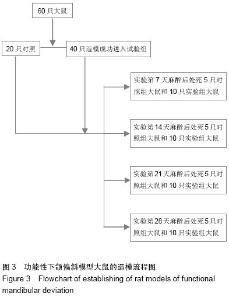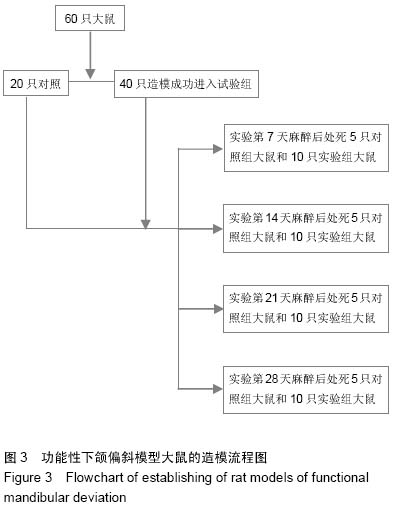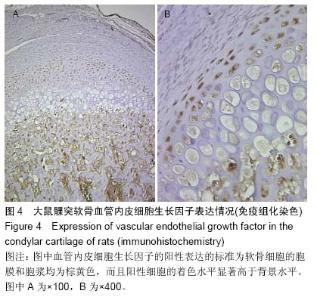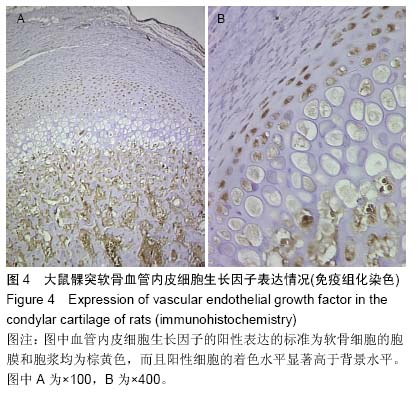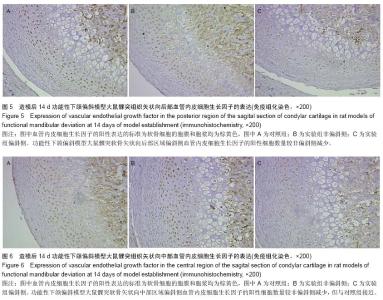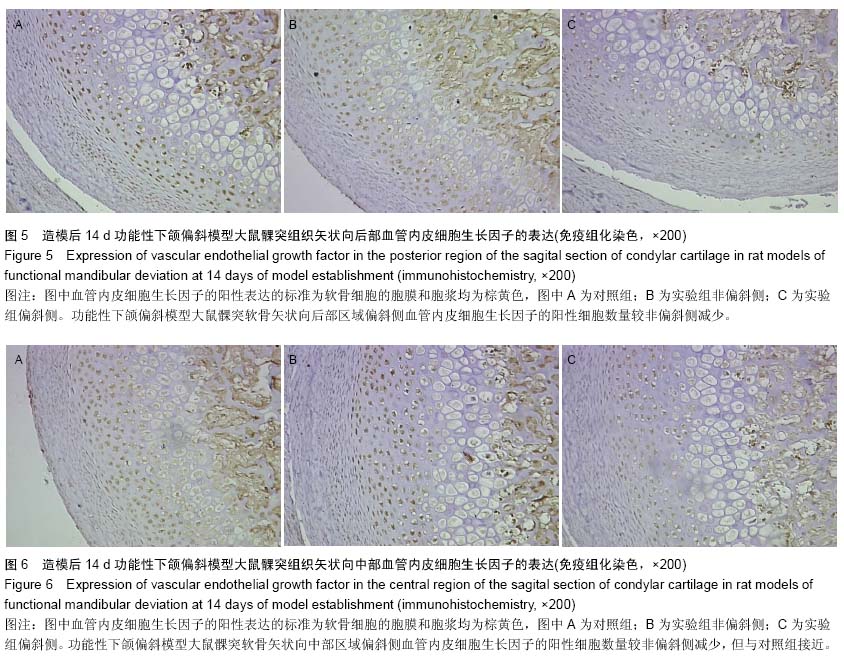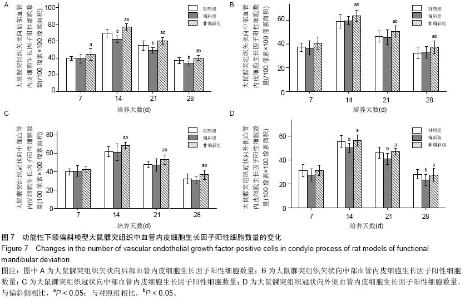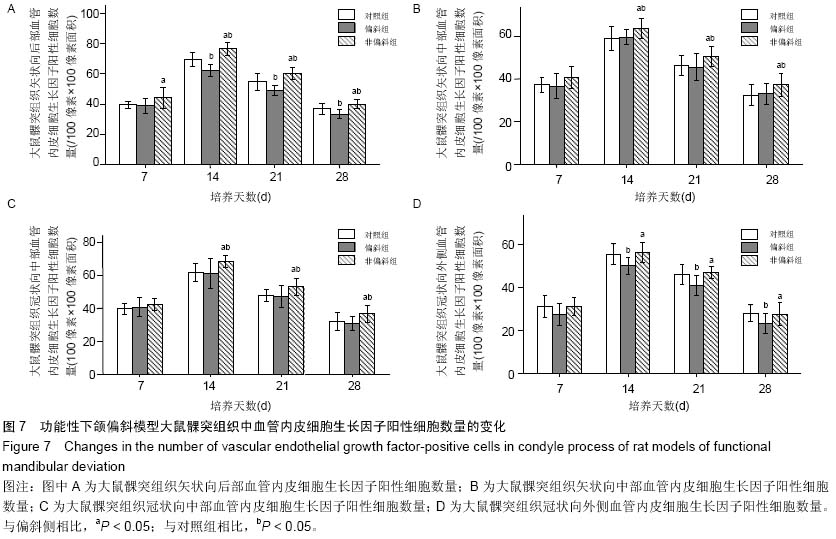| [1] Kecik D, Kocadereli I, Saatci I. Evaluation of the treatment changes of functional posterior crossbite in the mixed dentition. Am J Orthod Dentofacial Orthop. 2007;131(2): 202-215.
[2] 王华桥,邓峰,张定铭,等.功能性下颌偏斜对青春期大鼠下颌骨形态影响的初步研究[J].第三军医大学学报,2010,32(13):1417- 1420.
[3] Terman B, Khandke L, Dougher-Vermazan M, et al. VEGF receptor subtypes KDR and FLT1 show different sensitivities to heparin and placenta growth factor. Growth Factors. 1994; 11(3):187-195.
[4] Waltenberger J, Claesson-Welsh L, Siegbahn A, et al. Different signal transduction properties of KDR and Flt1, two receptors for vascular endothelial growth factor. J Biol Chem. 1994;269(43):26988-26995.
[5] Sawano A, Takahashi T, Yamaguchi S, et al. Flt-1 but not KDR/Flk-1 tyrosine kinase is a receptor for placenta growth factor, which is related to vascular endothelial growth factor. Cell Growth Differ. 1996;7(2):213-221.
[6] Landgren E, Schiller P, Cao Y, et al. Placenta growth factor stimulates MAP kinase and mitogenicity but not phospholipase C-gamma and migration of endothelial cells expressing Flt 1. Oncogene. 1998;16(3):359-367.
[7] Wang D, Donner DB, Warren RS. Homeostatic modulation of cell surface KDR and Flt1 expression and expression of the vascular endothelial cell growth factor (VEGF) receptor mRNAs by VEGF. J Biol Chem. 2000;275(21):15905-15911.
[8] Park JE, Chen HH, Winer J, et al. Placenta growth factor. Potentiation of vascular endothelial growth factor bioactivity, in vitro and in vivo, and high affinity binding to Flt-1 but not to Flk-1/KDR. J Biol Chem. 1994;269(41):25646-25654.
[9] Shore VH, Wang TH, Wang CL, et al. Vascular endothelial growth factor, placenta growth factor and their receptors in isolated human trophoblast. Placenta. 1997;18(8):657-665.
[10] Takagi H, King GL, Aiello LP. Identification and characterization of vascular endothelial growth factor receptor (Flt) in bovine retinal pericytes. Diabetes. 1996;45(8): 1016- 1023.
[11] Kaipainen A, Korhonen J, Pajusola K, et al. The related FLT4, FLT1, and KDR receptor tyrosine kinases show distinct expression patterns in human fetal endothelial cells. J Exp Med. 1993;178(6):2077-2088.
[12] Ferrara N, Davis-Smyth T. The biology of vascular endothelial growth factor. Endocr Rev. 1997;18(1):4-25.
[13] Ferrara N, Keyt B. Vascular endothelial growth factor: basic biology and clinical implications. EXS. 1997;79:209-232.
[14] Ortega N, Hutchings H, Plou?t J. Signal relays in the VEGF system. Front Biosci. 1999;4:D141-152.
[15] Ferrara N. Vascular endothelial growth factor. Eur J Cancer. 1996;32A(14):2413-2422.
[16] Klagsbrun M, D'Amore PA. Vascular endothelial growth factor and its receptors. Cytokine Growth Factor Rev. 1996;7(3): 259-270.
[17] Shibuya M, Ito N, Claesson-Welsh L. Structure and function of vascular endothelial growth factor receptor-1 and -2. Curr Top Microbiol Immunol. 1999;237:59-83.
[18] Veikkola T, Karkkainen M, Claesson-Welsh L, et al. Regulation of angiogenesis via vascular endothelial growth factor receptors. Cancer Res. 2000;60(2):203-212.
[19] Shibuya M. Role of VEGF-flt receptor system in normal and tumor angiogenesis. Adv Cancer Res. 1995;67:281-316.
[20] Fuentes MA, Opperman LA, Buschang P, et al. Lateral functional shift of the mandible: Part II. Effects on gene expression in condylar cartilage. Am J Orthod Dentofacial Orthop. 2003;123(2):160-166.
[21] Delatte M, Von den Hoff JW, van Rheden RE, et al. Primary and secondary cartilages of the neonatal rat: the femoral head and the mandibular condyle. Eur J Oral Sci. 2004; 112(2):156-162.
[22] Langberg BJ, Arai K, Miner RM. Transverse skeletal and dental asymmetry in adults with unilateral lingual posterior crossbite. Am J Orthod Dentofacial Orthop. 2005;127(1):6-15; discussion 15-16.
[23] O'Byrn BL, Sadowsky C, Schneider B, et al. An evaluation of mandibular asymmetry in adults with unilateral posterior crossbite. Am J Orthod Dentofacial Orthop. 1995;107(4): 394-400.
[24] 倪琳,丁寅,罗颂椒.儿童单侧后牙反牙合患者下颌及颞颌关节的对称性研究[J].口腔医学,2005,25(6):357-369.
[25] Liu C, Kaneko S, Soma K. Effects of a mandibular lateral shift on the condyle and mandibular bone in growing rats. Angle Orthod. 2007;77(5):787-793.
[26] Nakano H, Maki K, Shibasaki Y, et al. Three-dimensional changes in the condyle during development of an asymmetrical mandible in a rat: a microcomputed tomography study. Am J Orthod Dentofacial Orthop. 2004;126(4):410-420.
[27] Sato C, Muramoto T, Soma K. Functional lateral deviation of the mandible and its positional recovery on the rat condylar cartilage during the growth period. Angle Orthod. 2006;76(4): 591-597.
[28] Wattanachai T, Yonemitsu I, Kaneko S, et al. Functional lateral shift of the mandible effects on the expression of ECM in rat temporomandibular cartilage. Angle Orthod. 2009;79(4): 652-659.
[29] Kure-Hattori I, Watari I, Takei M, et al. Effect of functional shift of the mandible on lubrication of the temporomandibular joint. Arch Oral Biol. 2012;57(7):987-994.
[30] Maes C, Stockmans I, Moermans K, et al. Soluble VEGF isoforms are essential for establishing epiphyseal vascularization and regulating chondrocyte development and survival. J Clin Invest. 2004;113(2):188-199.
[31] Peng H, Usas A, Olshanski A, et al. VEGF improves, whereas sFlt1 inhibits, BMP2-induced bone formation and bone healing through modulation of angiogenesis. J Bone Miner Res. 2005;20(11):2017-2027.
[32] Rabie AB, H?gg U. Factors regulating mandibular condylar growth. Am J Orthod Dentofacial Orthop. 2002;122(4): 401-409.
|
